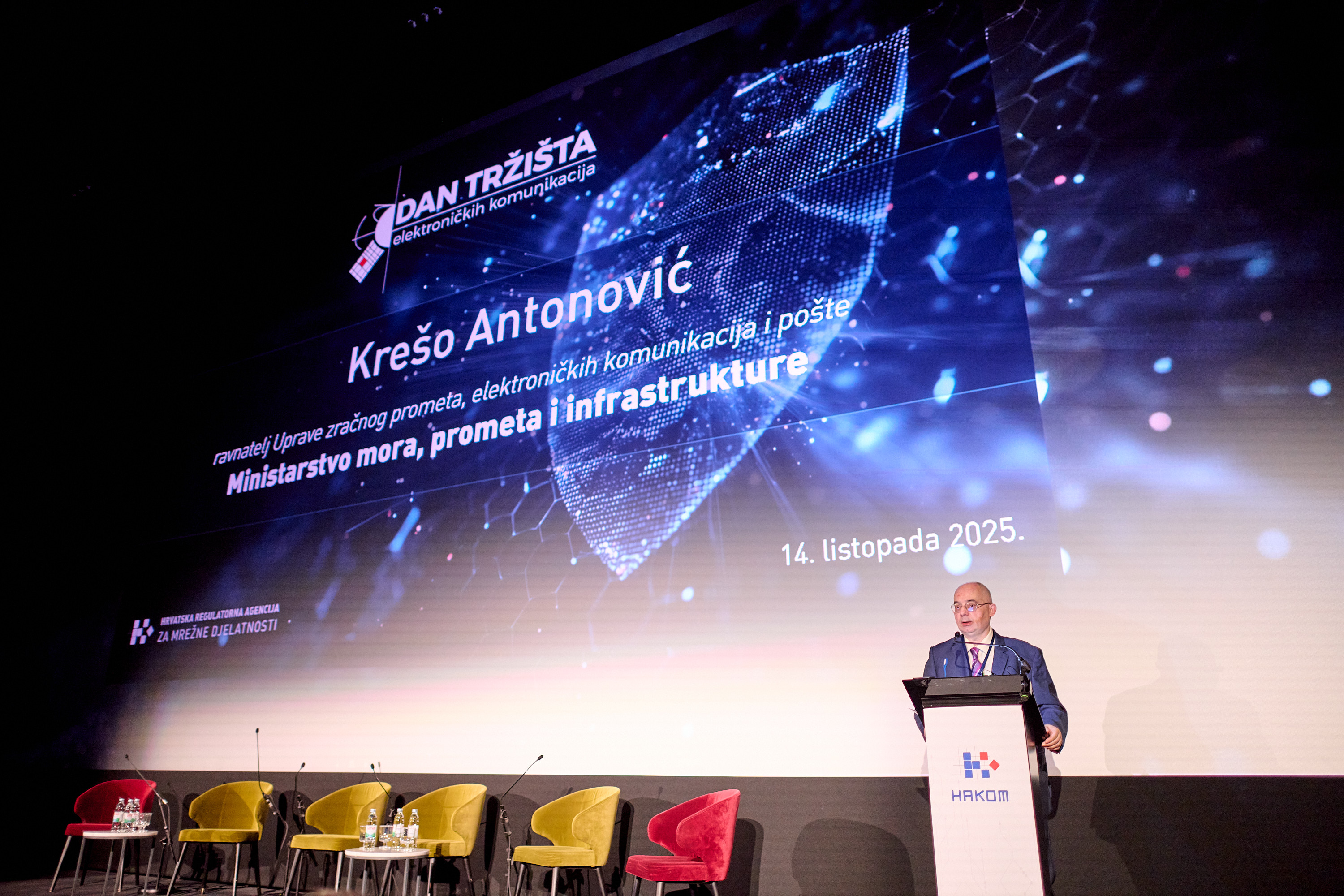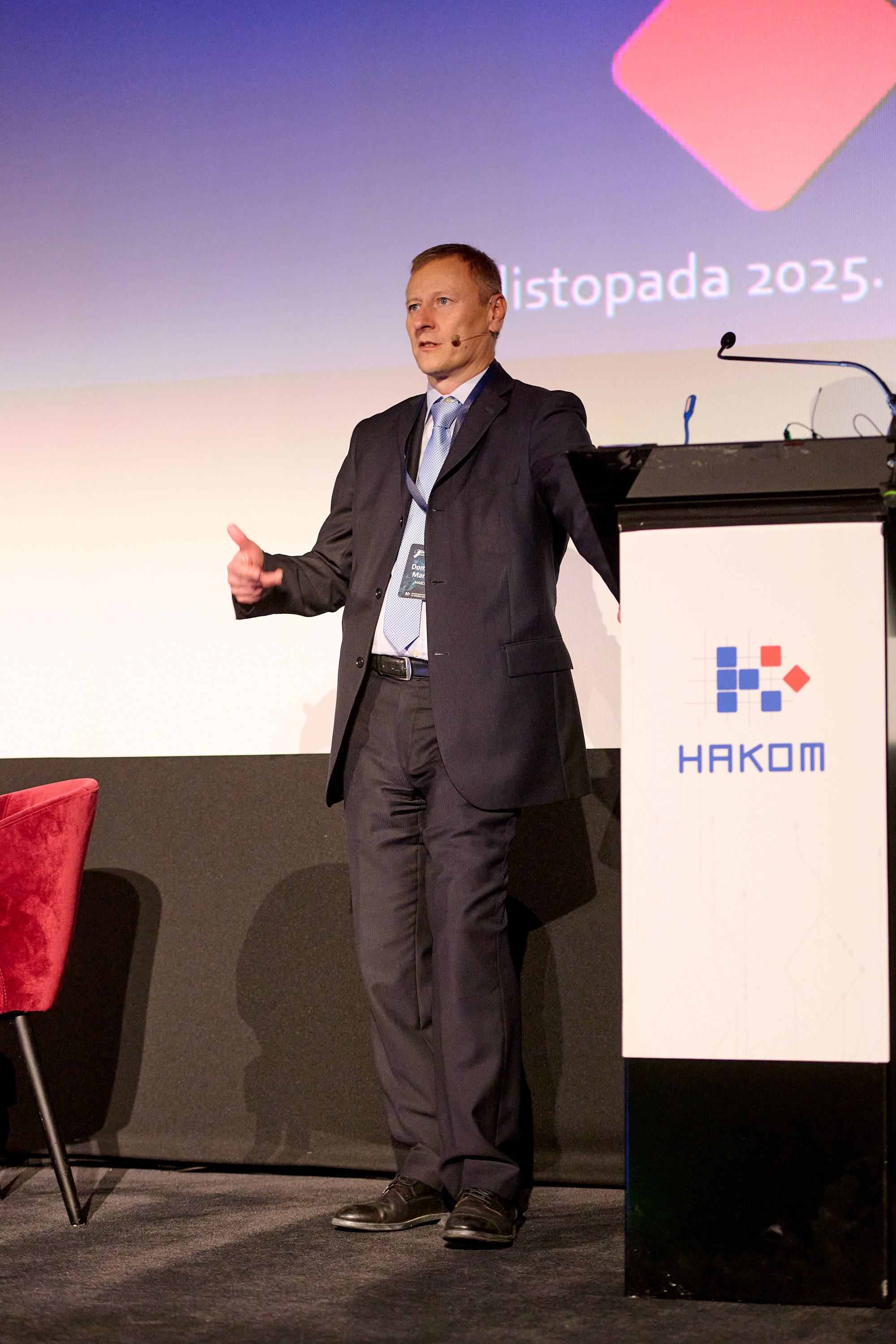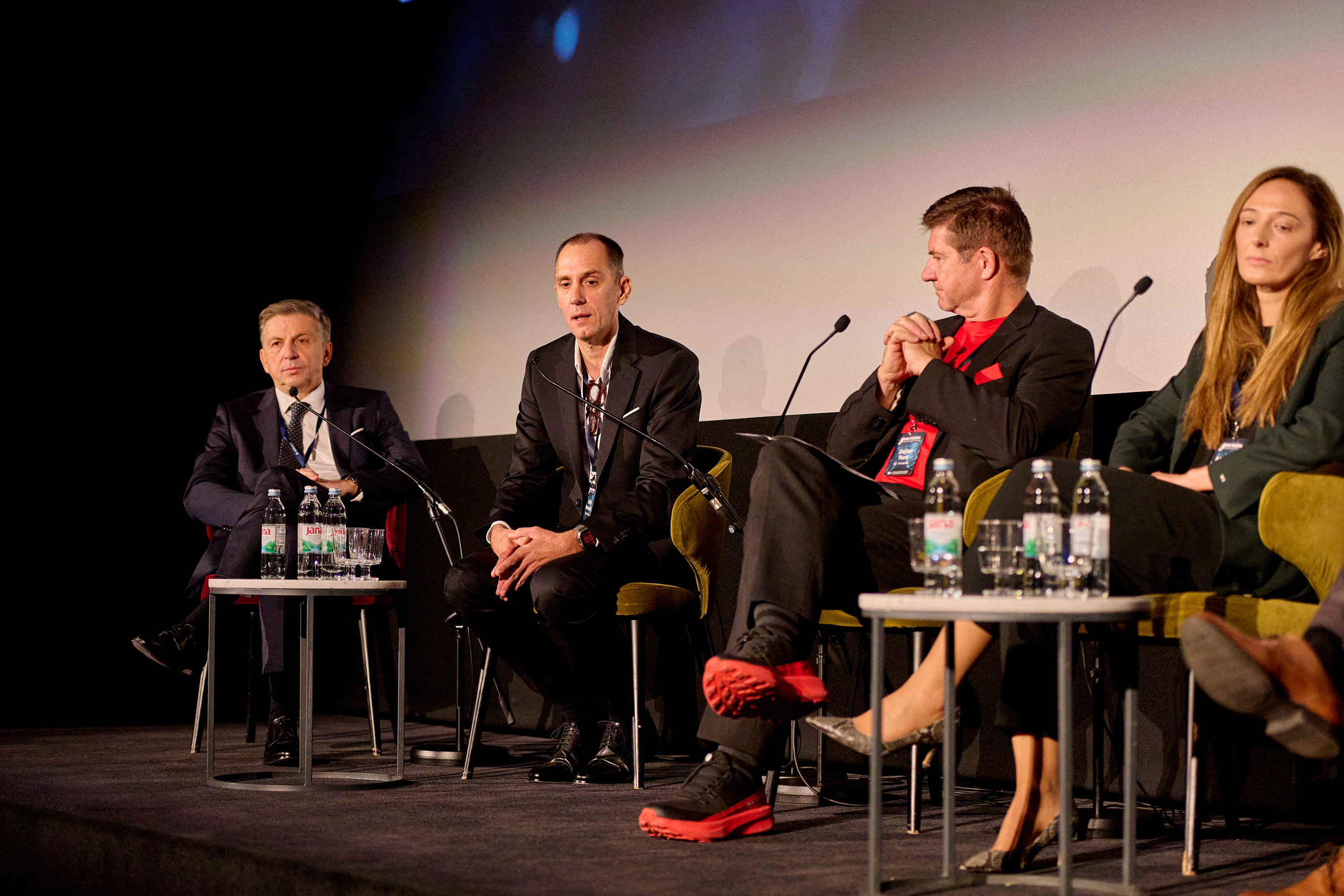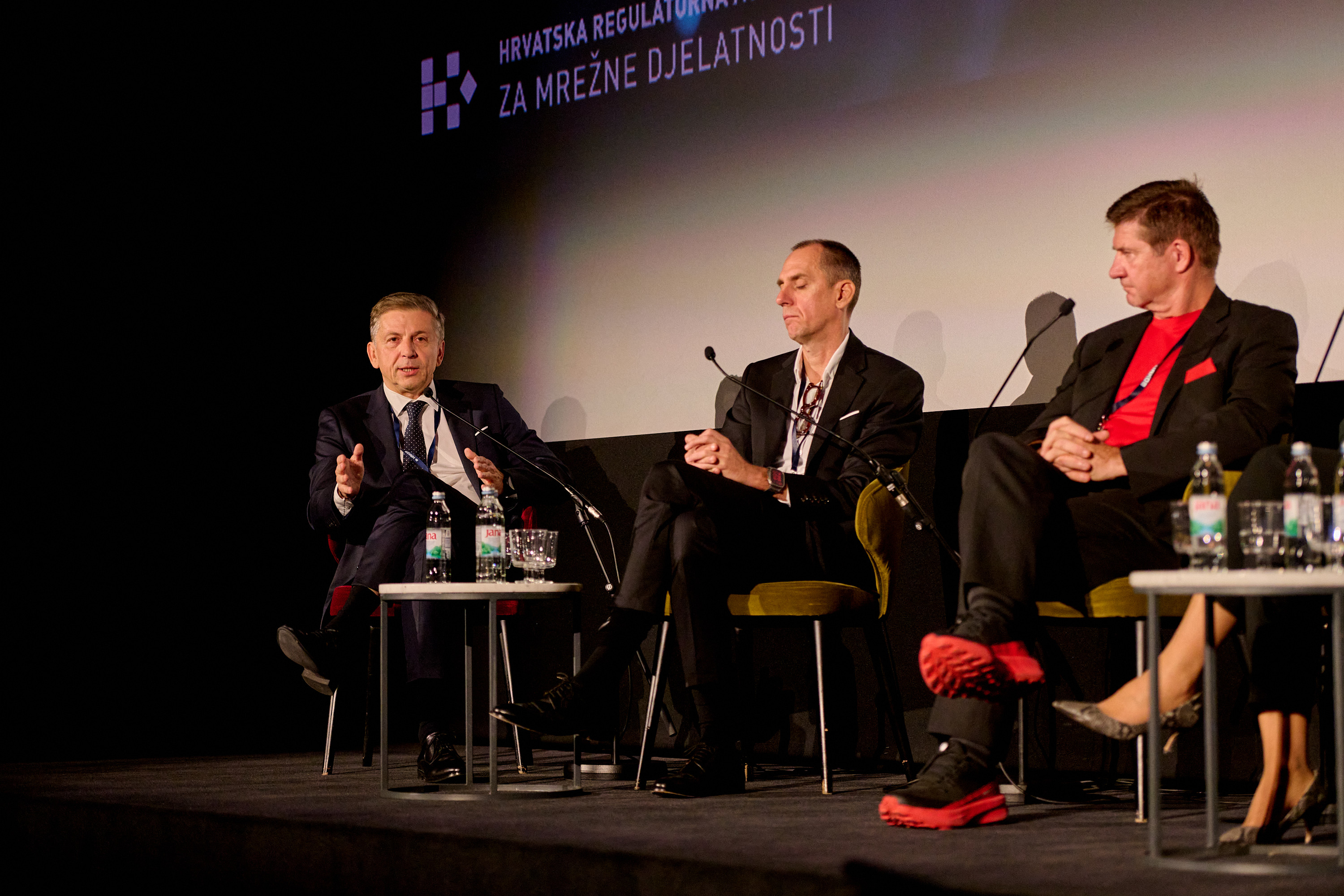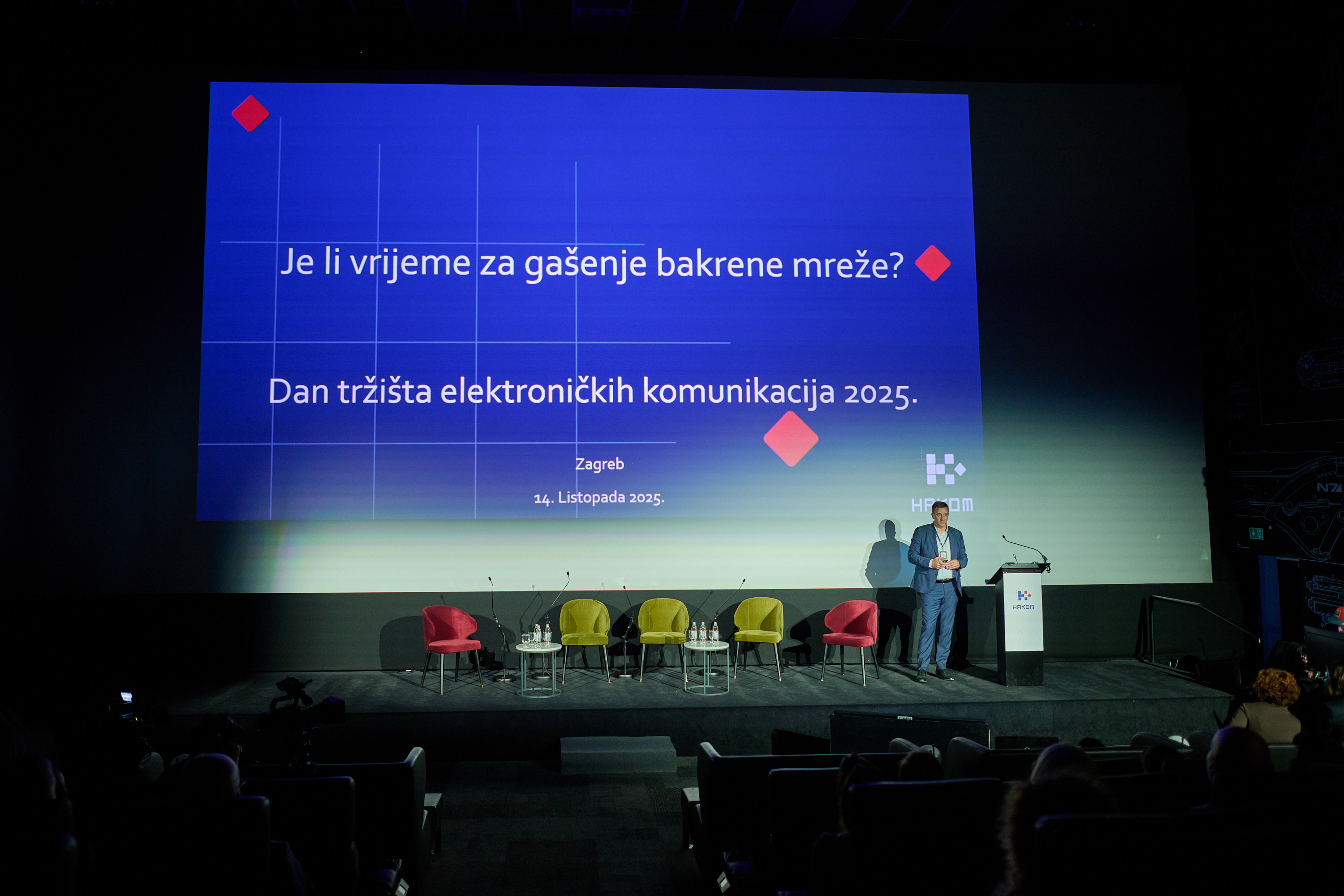HAKOM Market Day: Amendments to the Regulatory Framework Ahead, While the Timing of the Copper Network Switch-off Remains Unknown
ZAGREB, 14 October 2025 - On Tuesday, the twelfth annual Market Day of Electronic Communications took place in Zagreb. This traditional conference brings together representatives of market stakeholders, government bodies, the business community, academia and the media. The event, organised by the Croatian Regulatory Authority for Network Industries (HAKOM), addressed key issues related to the adoption of new regulatory frameworks, the transition of digital infrastructure in Croatia, and the achievement of the goals of the Digital Decade on the path towards a gigabit future. The conference also dealt with the challenges surrounding the national implementation of the EU Directive on Cybersecurity. In his opening address, the President of HAKOM’s Council, Tonko Obuljen, emphasised that the market is evolving very dynamically, referring both to the current and ongoing activities. This, he noted, is the result of the initiatives and investments of operators, the activities of the regulator, as well as the growing demand from users. The results of the analysis on the quality of mobile networks indicate that all three Croatian networks are of good quality, despite various challenges and limitations, Obuljen stated. He stressed that HAKOM remains committed to improving conditions and expressed gratitude to operators for their progress in the field of user protection, as the number of user disputes has not been increasing. He also pointed out that three advisory mechanisms have recently been formally established - for children, for persons with disabilities, and for the elderly. He invited all stakeholders to cooperate in further improving the quality of services and attitudes towards vulnerable groups, as this is a way to achieve something both meaningful and measurable within society.
Representing the Prime Minister Andrej Plenković, Krešo Antonović, Director of the Directorate for Air Transport, Electronic Communications and Post at the Ministry of the Sea, Transport and Infrastructure, greeted the participants. “Electronic communications are the backbone of the development of any modern society and economy. This is why the Government is committed to advancing digital transformation, building infrastructure, and ensuring the provision of services to all citizens. I would like to thank HAKOM for having, for the past twelve years, maintained both the motivation and the capacity to bring together all market stakeholders in one place to exchange knowledge, visions and experiences,” said Antonović.
Speaking about the development of the market in the context of the Digital Networks Act (DNA), HAKOM’s Deputy Executive Director Domagoj Maričić presented the background of the DNA proposal. Referring to the current stage of the process, he explained that it is now the task of the European Commission and the new Commissioner, Henna Virkkunen, to translate the programme documents into a concrete proposal for the DNA. The content of this proposal, he said, is indicated by the questions raised in the European Commission’s public consultation held in June 2025. The objective is to establish a fully integrated single market, remove barriers to cross-border operations, complete the transition to optical fibre, and ensure regulation appropriate for 5G and for cloud-based, software-defined networks.
The main directions of action include: simplification of the regulatory framework, spectrum policy, equal rules for all participants, new rules on access to digital networks, and governance. Simplifying the regulatory framework involves reducing reporting requirements, streamlining the prior notification regime, further harmonising end-user rights, and promoting cross-border services, B2B operations and IoT services without additional regulation. With regard to spectrum, it is necessary to strengthen the peer review process, harmonise the rules for spectrum allocation, extend licence durations, define the conditions for 6G deployment, ensure EU-wide solidarity in addressing interference issues, and establish regulations for the provision of satellite services. Ensuring equal rules for all participants requires expanded definitions that reflect technological realities, as well as provisions for IP interconnection and network neutrality. Regarding network access, this involves moving away from individual ex ante regulation towards a symmetrical approach based on the General Impact Assessment (GIA), the introduction of a pan-European wholesale product, and the establishment of a legally binding date for the copper network switch-off. Furthermore, a strengthened role for BEREC is envisaged, including its merger with RSPG, Maričić explained.
How Could the New Regulatory Framework Affect the Development of the Croatian Market?
A panel discussion followed on the topic “Leaders on the New Regulatory Framework and Its Potential Impact on the Development of the Croatian Market”. The discussion, moderated by Tonko Obuljen, featured Damir Kramarić, lawyer; Marko Mišmaš, Director of the Slovenian regulatory authority for electronic communications (AKOS) and next year’s incoming Chair of BEREC; Siniša Đuranović, Member of the Management Board for Corporate Affairs at Hrvatski Telekom; Morana Čulo Jovičić, Executive Director of the Legal and Regulatory Affairs at Telemach; and Dejan Turk, Member of the Management Board and Chief Executive Officer of A1 Croatia. Given that the process of adopting the new EU regulatory framework — the Digital Networks Act (DNA) — is currently under way, and that its aim is to improve access to secure, fast and reliable connectivity for the transition to cloud-based and artificial intelligence-driven infrastructure, the leaders of Croatia’s telecommunications operators discussed how the new framework might influence the development of the Croatian market.
During the discussion, participants addressed the current regulatory framework and explored possibilities for its improvement. It was also emphasised that Europe currently lacks sufficient investment capacity to achieve the objectives of the Digital Decade — namely, the roll-out of gigabit networks to all households. Despite the existence of a single regulatory framework, the fragmentation of Europe, caused by numerous differing national rules, as well as the diversity of spectrum policies and numbers of operators, hinders that goal. Mr Đuranović noted that operators have been investing significantly and building networks in recent years, yet market growth is not sustainable in the long term due to rising costs and inflation. He underlined that the regulatory framework plays a crucial role and that regulatory predictability is essential for operators to know where to invest, as network rebuilding and underutilisation are already occurring. Mr Turk added that in future, investment would increasingly shift towards the ICT and AI sectors. Speaking about the necessity of regulation — but also of its revision — Ms Čulo Jovičić pointed out that Croatia already has examples of both deregulation and symmetrical regulation, and that the concept of targeted regulation is sound, as it leaves room for encouraging market development. She argued that their investments have contributed to stimulating competition, while also providing significant benefits for users. Mr Kramarić, the lawyer, expressed the view that deregulation is a good idea, though he noted that we are still largely engaged in a process of re-regulation, in which existing rules are replaced by new regulatory packages — albeit with certain areas being relaxed, where appropriate.
Reflecting on changes over the past fifteen years, Mr Mišmaš observed that the market has shifted from a monopoly to an oligopoly, with the development of optical and mobile networks giving rise to a much broader range of market players. The current legal framework, he said, has been successful for Europe: it has enabled lower service prices compared with those in the United States, while network development rates have remained on a similar level. The forthcoming regulatory framework must address the market and technological changes that have already taken place — as well as those known to be on the horizon. Fundamentally, regulators must work effectively to prevent and correct market irregularities. The present legal framework needs to be appropriately upgraded, with further adjustments particularly necessary for today’s oligopolistic markets, in which vertical disintegration, virtualisation of network functions and the inclusion of cloud infrastructure are increasingly taking place, Mišmaš concluded.
The financing of gigabit networks has been — and will remain — the responsibility of operators across Europe. Governments can, however, assist through subsidies in areas where there is no commercial interest, Mr Đuranović emphasised, appealing for a solution to be found for the remaining half a million households for which no funding has yet been allocated. He noted that the current regulation is objectively outdated, being a 23-year-old concept based on principles of value distribution, whereas regulation today should be designed to encourage growth. He also observed that the entry of major American players into the European market, who use our infrastructure to create value for themselves, highlights Europe’s lack of competitiveness, overregulation and other structural challenges. “We are no longer traditional telecom operators, and we shall become even less so in the future, as we transform into digital companies, increasingly resembling those global players we are talking about. We are virtualising our networks, and artificial intelligence represents an opportunity for us to become truly innovative,” he added.
Croatia’s Progress and the European Commission’s Recommendations
Later in the conference, Julijana Jančula Bauer from HAKOM’s Broadband Access Office presented an overview of the findings of the Digital Decade 2025 Report, focusing on Croatia. She outlined the country’s progress in the development of fibre-optic networks and 5G technology compared with other EU Member States, with particular attention to the challenges facing rural areas and to opportunities for accelerating Croatia’s path towards a gigabit future. There has been significant progress in both FTTP and 5G coverage, with growth rates above the EU average. Very High Capacity Network (VHCN) coverage is also advancing well, largely owing to EU co-financing. In 2024, additional measures related to 5G networks were incorporated into the National Roadmap. The European Commission’s recommendations in connection with the Digital Decade 2025 Report concern the introduction of targeted measures to accelerate fibre network deployment and take-up, the implementation of regulatory and financial instruments to encourage the construction of denser 5G networks (including the use of spectrum in the millimetre-wave band), and the faster implementation of secure standalone 5G networks (5G SA). They also call for the promotion of cross-border cooperation, the fostering of innovative 5G applications, and coordinated action in the planning and development of a reliable, sovereign and resilient digital infrastructure — encompassing core terrestrial, submarine and satellite networks — across the EU and with international partner countries, she emphasised.
When Can We Expect the Copper Network to Be Switched Off
The switch-off of the copper network — a process that brings numerous opportunities as well as challenges for all stakeholders in the electronic communications market — was the topic of a presentation by Mladen Sikirica, Head of HAKOM’s Market Analysis Department. Users are gradually migrating from copper to VHCN networks, and at present, 17 EU Member States have plans in place for the decommissioning of copper networks. In 15 of these, some parts of the network have already been switched off, while nine countries have announced complete switch-off by 2040. In Croatia, the switch-off procedure is defined in Article 114 of the Electronic Communications Act. The operator with Significant Market Power (SMP) must notify HAKOM of the schedule and conditions for decommissioning or replacing parts of the network with new infrastructure. It must also provide an appropriate notice period for third parties directly affected by the transition, outline the migration period, and submit a specification of available substitute products that are at least of comparable quality and that provide access to an improved network infrastructure. If, based on the information provided, HAKOM determines that the switch-off or migration process does not adequately safeguard market competition and the rights of end-users, it will set the conditions necessary to ensure a fair and appropriate transition, Mr Sikirica concluded.
Given that the number of VHCN connections has now exceeded that of copper connections, participants in the panel discussion explored whether the time has come to decommission the copper network. The discussion panel featured Igor Vujović from the Croatian Consumers’ Association, Stojan Nikolić from RUNE Crow, Morana Čulo Jovičić from Telemach, and Marko Čavlović from Hrvatski Telekom.
-Hrvatski Telekom does not yet have a date for making such a decision. The market is currently investing heavily in VHCN networks, and that process is complex, resource-intensive and lengthy. We do not exclude the possibility of pilot projects on a smaller scale,” said Mr Čavlović, adding that imposing a deadline would not accelerate digital transition. The regulatory framework is adequate, but it is crucial that HAKOM provides maximum support to network owners. Setting a short deadline could jeopardise the transition process,” he concluded.
-I will be able to give a final opinion on the process once we see a concrete plan and conditions. The regulator must be involved, and our greatest concern would be if the process were to disrupt market relations. Timely announcement of the switch-off is important for several reasons — our wholesale service will be discontinued, and we will need to migrate our own users. We also have to prepare our resources, as we are all part of this process,” stated Ms Čulo Jovičić.
-Users are aware that technology is advancing, although there is some fear among older users in rural areas. They need to be informed and shown that this transition brings benefits to their households and will enable them to access more modern services,” explained Mr Vujović, who said he did not support hasty decisions.
RUNE Crow is ready to transfer users from copper to fibre networks in the areas it covers and is capable of building new infrastructure relatively quickly. Human resources are not an issue for the company, but it too does not favour rushed decisions. “In Slovenia, since the spring, we have been offering discounts to users during the migration process,” noted Mr Nikolić.
Challenges of National Implementation of the NIS2 Directive-Can We Have Secure Networks in Uncertain Times?
The final panel discussion, entitled “Implementation of the Cybersecurity Act in the Electronic Communications Networks and Services Sector”, moderated by Vesna Gašpar, Senior Expert in HAKOM’s Communications Services Department, provided answers to a range of questions concerning this complex and demanding area. The session began with a presentation on the work of the newly established National Cybersecurity Centre, followed by a discussion featuring Martina Dragičević from the ICT Employers’ Association, Usama Kalit from Optika Kabel, Aleksandar Klaić from the Security and Intelligence Agency (SOA), and Krešimir Šipek from the Information Systems Security Bureau (ZSIS). The focus of the discussion was on the challenges of implementing the NIS2 Directive at national level, particularly regarding the current situation and the planned activities for the implementation of the Cybersecurity Act in the electronic communications sector. In addition to the challenges faced by operators, the discussion also addressed the role and support of competent institutions — especially for smaller operators - in helping them overcome these challenges.
Mr Klaić described the previously conducted implementation process, which lasted more than two years and began as early as 2019. The development of this highly complex framework involved cooperation among twelve government bodies through the Coordination for National Crisis Management, supported by the Employers’ Association and around seventy ICT companies. The new Cybersecurity Act framework comprises thirteen new instruments, the main ones being the Act itself, an implementing regulation, and a national programme, accompanied by a range of guidelines, taxonomies, instructions and a government plan.
As an association, we were involved in the implementation process from the very beginning. It was a unique opportunity to participate and make proposals from the earliest stage of creating the regulatory framework. As part of the coordination body, we worked intensively on developing thirteen measures and ninety-four sub-measures listed in Annexes II and III of the Regulation,” explained Ms Dragičević. “We were also active in drafting the guidelines for self-assessment and auditing.”
Mr Šipek spoke about the transformation of ZSIS, which has acquired new powers. The agency has become a security auditor for public authorities and has been tasked with drafting a set of rules for the implementation of the Act and associated regulations, including guidelines for self-assessment, rules for security certification, and cybersecurity auditing. The next stage will be to carry out the certification process itself. Since the regulation entered into force in November 2024, deadlines have begun to run for the adoption of the relevant instruments. A large number of stakeholders have been included to gather their experience and expertise, all of which have been incorporated into both key documents. The guidelines were published on time at the end of May, and the rules at the end of August.
Mr Kalit noted that smaller operators face difficulties due to a lack of qualified personnel in the field of cybersecurity, as well as limited understanding of the challenges and insufficient financial resources. Operators, he said, require financial support for maintaining infrastructure, co-financing mechanisms, and tools to help them adapt to the system. “The two-year deadline is very short, and we lack both people and funds. Some measures are difficult to apply, such as the requirement to employ at least two specialist staff members or to provide equipment through leasing,” he explained.
-For small operators, the implementation of the thirteen measures will cost around €340,000. Funding sources include the National Coordination Centre, which operates within CARNET and has issued a call for grants open to micro, small and medium-sized enterprises. At EU level, there are also programmes with budgets aimed at strengthening resilience, but applications for such calls are somewhat more complex,” Ms Dragičević clarified.
For additional information please contact:
Croatian Regulatory Authority for Network Industries (HAKOM)
- Roberta Frangeša-Mihanovića 9 Street
- 10110 Zagreb, Croatia
- Tel. + 385 (0) 1 700 70 07
- Fax + 385 (0)1 700 70 70
Media inquiries can be submitted online using HAKOM’s official website: www.hakom.hr
About Hakom
HAKOM - Croatian Regulatory Authority for Network Industries – ensures preconditions for a fair market competition, stable growth and environment for innovations in the electronic communications and postal services market. HAKOM protects users’ interests and the possibility of choice among various communications and postal services at affordable prices, defines sustainable competitive conditions for operators and service providers under fair conditions for return on investment, and provides support to economic growth, public services and the quality of life in the Republic of Croatia by using modern technologies. HAKOM’ strategic goals are: to promote regulation of the electronic communications and postal services market, to support growth of investments and innovations in the electronic communications and postal services market, to provide efficient use of limited resources, to accelerate the growth of broadband products and services, to provide affordable offers of communications and postal services, to provide protection and informing of users, to build an efficient and comprehensive information system, to define and implement efficient processes, and to acquire multi-disciplinary expertise in market regulation.


